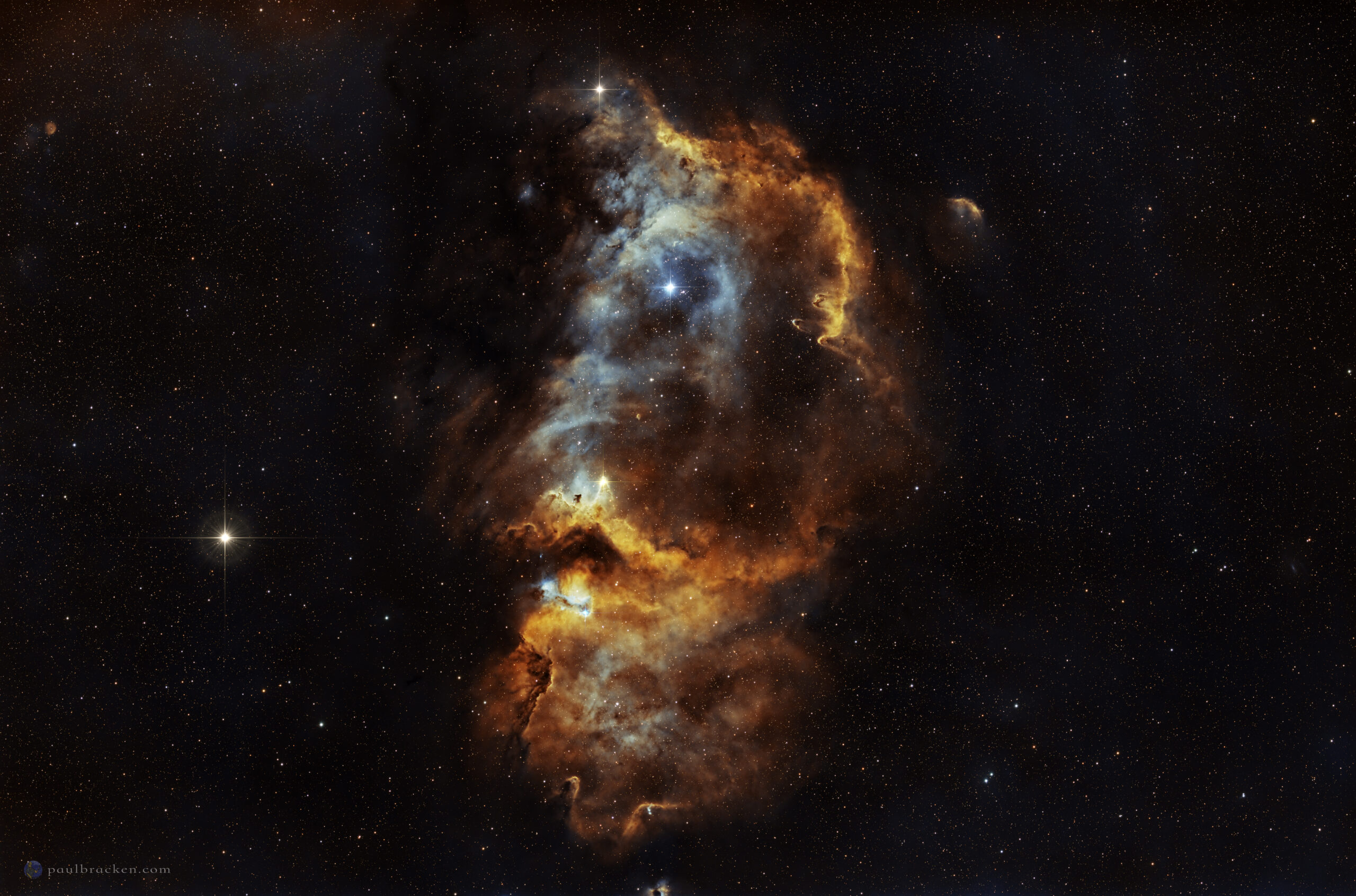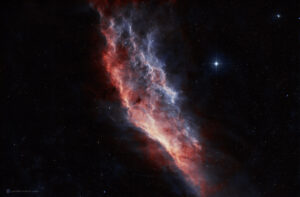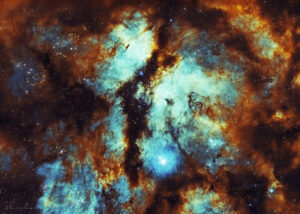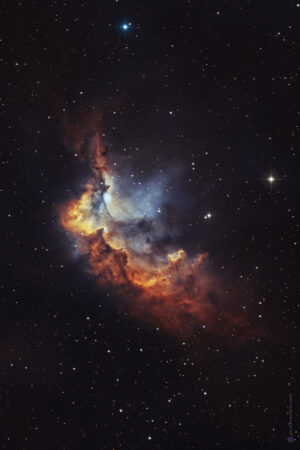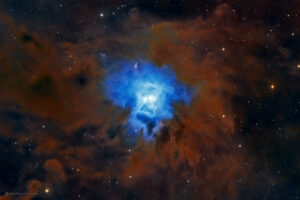Of all the images I’ve taken so far, this one, I think, provides the best illustration of triggered star formation. Although this is called the Soul Nebula, due to its proximity in the sky to the Heart Nebula, the large cave-like gaps look to me a little like the ventricles of a human heart.
Floating within these vast chambers are bluish stars that are a little older than the stars around the periphery. That’s because the stars themselves are responsible for sculpting these beautiful forms, and excavating the cavities. Starlight and energetic particles flowing outward from the stars exert pressure on the gaseous material in the nebula. This flow of radiation is often referred to as stellar wind, because it blows the surrounding material away from the stars.
Around the edges of these large chambers, the gases are compressed and pushed into clumps, or filaments. As material is blown away, the denser regions that remain are often referred to as ‘star formation pillars’ – or “pillars of creation”. Although that may sound a little pretentious, the title is arguably quite accurate given that all of nature was manufactured via this process, including the atoms within our bodies.
If you look closely, you can see younger stars forming on the tips of elephant-trunk-like appendages near the center of the image, and in the cloud filaments that appear bright yellow. Within the chambers you can see wispy regions of hot dust, and small cocoon-like globules that, if I am not mistaken, are also places where new stars are forming. The material within the star forming regions mostly consists of molecular hydrogen, and it is through the process of gravitational contraction that fragments of these molecular clouds condense to form new stars.
